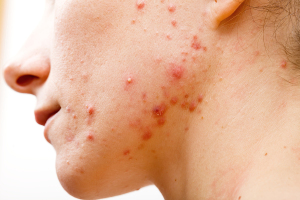Introduction
Skin infection can be due to a variety of causes such as bacteria, viral infections, fungi, yeast, even skin parasites. Although there are very specific causes for the different skin infections, as I shall mention under the various links, there is a common denominator as well. Acne in adolescents is made more chronic due to bacterial superinfection, which causes scarring.
Skin is the largest organ that protects our inside world from the outside world. The temperature and blood composition is always kept the same inside. However, the outside temperatures experience great fluctuations. Exposure to trauma, water, chemicals etc. poses a risk to the integrity of the skin. An allergic skin reaction, such as a poison ivy rash, is another example that can lead to very disabling rashes with skin breakdowns lasting 2 to 3 weeks. Viruses, fungi, parasites and others can break down the skin as well. There is the always present danger of super infection, once the skin has broken down, with bacteria complicating and prolonging what was supposed to be a swift recovery from a “skin sore”.
In the following I will briefly deal with the most common skin infections. Use the links to get more in depth information on the various conditions of skin infection.
References
1.The Merck Manual, 7th edition, by M. H. Beers et al., Whitehouse Station, N.J., 1999. Chapter 265.
2.James Chin et al., Editors: Control of Communicable Diseases Manual, 17th edition, 2000, American Public Health Association
3.The Merck Manual, 7th edition, by M. H. Beers et al., Whitehouse Station, N.J., 1999. Chapter 112.
4. The Merck Manual, 7th edition, by M. H. Beers et al., Whitehouse Station, N.J., 1999. Chapter 115.
5. The Merck Manual, 7th edition, by M. H. Beers et al., Whitehouse Station, N.J., 1999. Chapter 113.
6. David Heymann, MD, Editor: Control of Communicable Diseases Manual, 18th Edition, 2004, American Public Health Association.







